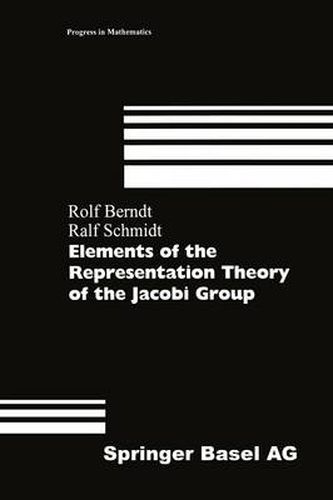Readings Newsletter
Become a Readings Member to make your shopping experience even easier.
Sign in or sign up for free!
You’re not far away from qualifying for FREE standard shipping within Australia
You’ve qualified for FREE standard shipping within Australia
The cart is loading…






This title is printed to order. This book may have been self-published. If so, we cannot guarantee the quality of the content. In the main most books will have gone through the editing process however some may not. We therefore suggest that you be aware of this before ordering this book. If in doubt check either the author or publisher’s details as we are unable to accept any returns unless they are faulty. Please contact us if you have any questions.
After Pyatetski-Shapiro [PSI] and Satake [Sal] introduced, independent of one another, an early form of the Jacobi Theory in 1969 (while not naming it as such), this theory was given a definite push by the book The Theory of Jacobi Forms by Eichler and Zagier in 1985. Now, there are some overview articles describing the developments in the theory of the Jacobi group and its automor- phic forms, for instance by Skoruppa [Sk2], Berndt [Be5] and Kohnen [Ko]. We refer to these for more historical details and many more names of authors active in this theory, which stretches now from number theory and algebraic geometry to theoretical physics. But let us only briefly indicate several - sometimes very closely related - topics touched by Jacobi theory as we see it: * fields of meromorphic and rational functions on the universal elliptic curve resp. universal abelian variety * structure and projective embeddings of certain algebraic varieties and homogeneous spaces * correspondences between different kinds of modular forms * L-functions associated to different kinds of modular forms and autom- phic representations * induced representations * invariant differential operators * structure of Hecke algebras * determination of generalized Kac-Moody algebras and as a final goal related to the here first mentioned * mixed Shimura varieties and mixed motives.
$9.00 standard shipping within Australia
FREE standard shipping within Australia for orders over $100.00
Express & International shipping calculated at checkout
This title is printed to order. This book may have been self-published. If so, we cannot guarantee the quality of the content. In the main most books will have gone through the editing process however some may not. We therefore suggest that you be aware of this before ordering this book. If in doubt check either the author or publisher’s details as we are unable to accept any returns unless they are faulty. Please contact us if you have any questions.
After Pyatetski-Shapiro [PSI] and Satake [Sal] introduced, independent of one another, an early form of the Jacobi Theory in 1969 (while not naming it as such), this theory was given a definite push by the book The Theory of Jacobi Forms by Eichler and Zagier in 1985. Now, there are some overview articles describing the developments in the theory of the Jacobi group and its automor- phic forms, for instance by Skoruppa [Sk2], Berndt [Be5] and Kohnen [Ko]. We refer to these for more historical details and many more names of authors active in this theory, which stretches now from number theory and algebraic geometry to theoretical physics. But let us only briefly indicate several - sometimes very closely related - topics touched by Jacobi theory as we see it: * fields of meromorphic and rational functions on the universal elliptic curve resp. universal abelian variety * structure and projective embeddings of certain algebraic varieties and homogeneous spaces * correspondences between different kinds of modular forms * L-functions associated to different kinds of modular forms and autom- phic representations * induced representations * invariant differential operators * structure of Hecke algebras * determination of generalized Kac-Moody algebras and as a final goal related to the here first mentioned * mixed Shimura varieties and mixed motives.